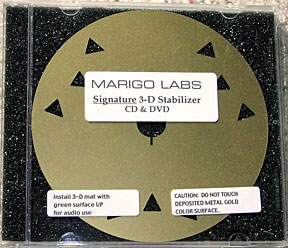I wish tweaks didn’t matter.
Think about how simple this hobby would be, if absolute performance was as simple as buying the best components you can afford, and having good recordings. That’d free up enough time for me to write that great American novel I’ve been mulling over. But alas, it is these “tweaks”, which are a euphemism for “attention to detail,” that can make all the difference in the world for a system.
If I were compiling a categorical breakdown of tweaks, it would certainly include the following:
* Room acoustics (Bass traps, room lenses, etc)
* AC (active & passive power conditioning, power cords, AC outlets)
* Vibration control (Rollerblocks, hard / soft footers, isolation platforms, racks)
* Software treatments (cleaners, mats, lathes)
In assembling this list, this is also the order of priority an audiophile should consider in fine tuning their systems. Room acoustics are highly audible, whereas everything down on that list is comparatively less pronounced. This is not to say that one shouldn’t address AC, or vibrations; its just a bit of cart-before-the-horse if one goes about optimizing for AC before treating the room. (After all, the way to build a good system is the same way to build a good basketball team: address your most obvious deficiencies and, upon succeeding, find and address subsequent deficiencies.)
To return to the tweak category list, the last item in this list, software treatments, are likely the most controversial—even more so than AC or vibrations. Reason being it is likely from the various hucksters who have sold various cleaners / waxes / animal secretion under the premise that they will make CDs sound as palpable as vinyl. Unfortunately, in the early days of this product category, those marketing slogans were little more than marketing slogans. However, these days there are a number of good CD treatments that I’ve come across. Products that I have direct experience and can affirm their improvement on the recording (note: I did not say “influence”, I said “improvement”, as good CD treatments have no downside) include Audiotop and Walker Audio’s Talisman.
Add to the list of effective products the Marigo Audio Signature 3-D v2 Stabilizer Mat (whew! What a long name! From here on, I’ll refer to it as the Marigo Signature Mat).
The Marigo Signature Mat is about the size of a compact disc and about as thick. It’s gold on one side and green on another. Using it is pretty simple: just drop it on top of the CD you are about to play, with the gold side against the CD. No other parts, nothing to reapply, no batteries, and infinitely reusable. Simple, huh?
Listening
Outside the heroic construction in the Esoteric VRDS transport system, most CD players / transports are hardly precision instruments. I think it hardly a big limb to climb onto when I say that the lack of precision machining in CD transports results in jitter and errors that become audible to the listener. If we could control for any micro-vibrations that the transport inherently generates, then we should get better sound (or so my theory goes).
Well, I’m no scientist, and I did not stay in a Holiday Inn Express last night, but hell’s bells, the theory held true in my experiences with the Marigo Signature Mat. Every CD player I tried the Marigo Signature Mat on was improved by its application. Invariably, the improvements wrought by the Marigo Signature Mat were a function of two elements: improved low level details and soundstage separation (which, if you think about it, is really a part of the former).
Listening to Jack Johnson’s debut record (a rare find: terrific music with 5-star sonics), I cued up “Bubble Toes” both with and without the Marigo Signature Mat on 3 different players (ranging from $500 to $4,000 retail). The lower-priced players captured more details with the Marigo Signature Mat in place, while the higher priced players captured more still. Using the Marigo Signature Mat with the Muse Polyhymnia player that I was most pleased with, I could hear Jack Johnson open his mouth and the air circulating around it as the song begins. Now that is low level detail! This is entirely consistent with my experiences in addressing vibrations and resonances in a hi-fi system: the more you remove vibrations from interfering with the signal, the more information you’ll receive.
The other area where the Marigo Signature Mat made obvious improvements in my rig is in stage separation. Stage depth was improved, the space around performers more distinct, and the recording venue more well defined. As stated earlier, the reason that I can pick up these staging cues is because these very cues are a function of enhanced low level detail, which manifest themselves as the depth, space and venue that I described.
Now, I don’t mean to make this product sound like a magic elixir for underachieving CD transports. The fact that it made every transport I tried in my reference rig sound better is not to say that it’ll take a $500 player’s performance to that of a $2,000 player’s. It clearly won’t. Furthermore, if your system isn’t up to snuff (read: you’ve not addressed the higher-priority tweaks), then you might not find the Marigo Signature Mat very effective, as its effects are more subtle than dramatic, even in a reference system. But, if you’re a died-in-the-wool audiophile whose system is up to snuff and you’re interested in getting every last bit of information out of your CDs, I cannot imagine you being disappointed with the Marigo Signature Mat.
- (Page 1 of 1)


Hello,
Can you use these in slot cd-players? I suppose not.
I use mine in my slot cd player. If they`re aligned exactly when inserting them,there shouldn`t be any problem.